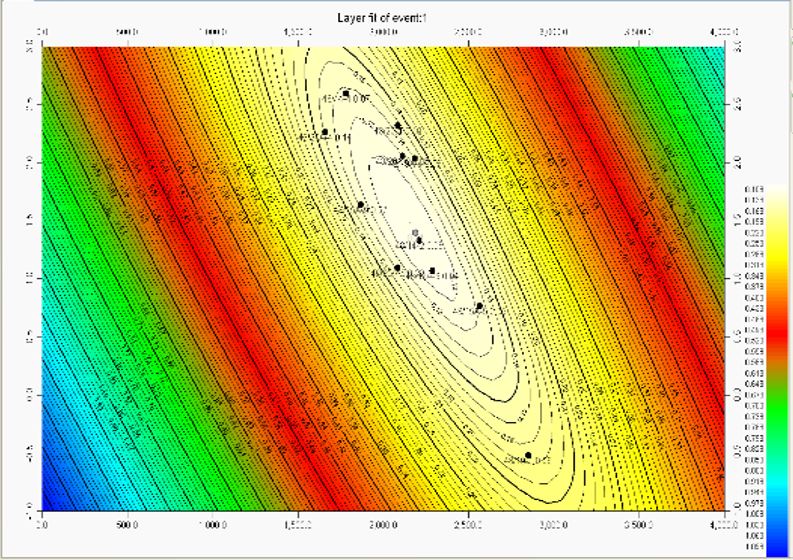VelPAK’s Optimise module enables you to depth convert using best-fit parameters for robust velocity control per layer. It replaces the simple V0K methods with a more advanced solution, providing you with the minimum error at all well locations, reducing your depth uncertainty in layers with increasing velocity trends. The method encompasses uplift, steep sea-beds and facies changes within your dataset and calculates a layered depth conversion you can trust.
In the Optimize module, parameter values are derived for different velocity functions, and various displays are produced to derive best-fit parameter values for all classic V0 and K depth conversion methods for each required layer.
Optimize uses non linear least squares curve fitting of time-depth curve data derived from sonic logs, check-shots or tops and times to derive the best function parameters for each well. It has the facility for allowing one parameter to be fixed and the other mapped e.g. fixed K and contoured V0. With close interaction between the parameter grid and the mapping modules you can immediately see the V0 and K values that best suit your data.
A depth conversion method is then defined. For example Vz=V0+Kz and a rough estimate of the Parameter Space is then defined. This is the range of V0’s and K’s to examine. This can be changed and the real area of interest zoomed into when it becomes apparent. This process is completed for each well and for each node on the grid, Optimize will then calculate the best ‘Fit’; how well the V0,K parameter pair fits the log data for this one well. The ‘Residual Line’ is also calculated; any parameter pair down this Residual line would result in a zero depth error for this well. For each pair of points on the time depth curve Optimize compares the known depth of the base point against the depth predicted by the function parameters.
Watch the short video on the Optimise module below.
VelPAK’s Optimise module enables you to depth convert using best-fit parameters for robust velocity control per layer. It replaces the simple V0K methods with a more advanced solution, providing you with the minimum error at all well locations, reducing your depth uncertainty in layers with increasing velocity trends. The method encompasses uplift, steep sea-beds and facies changes within your dataset and calculates a layered depth conversion you can trust.

